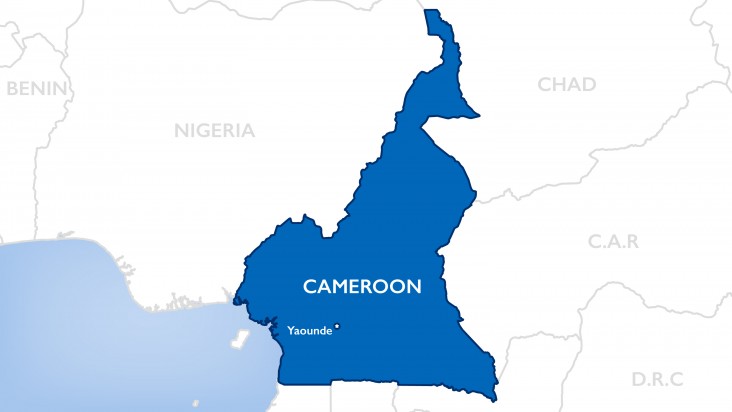- What We Do
- Agriculture and Food Security
- Democracy, Human Rights and Governance
- Economic Growth and Trade
- Education
- Environment and Global Climate Change
- Gender Equality and Women's Empowerment
- Global Health
- Humanitarian Assistance
- Transformation at USAID
- Water and Sanitation
- Working in Crises and Conflict
- Disaster Assistance
- Stabilization and Transitions
- Where We Work
- Afghanistan
- Armenia
- Bosnia and Herzegovina
- Burkina Faso
- Colombia
- Ethiopia
- Iraq
- Libya
- Malaysia
- Mozambique
- Niger
- Nigeria
- Sudan
- Ukraine
- Closed Programs
- Afghanistan
- Albania
- Angola
- Bolivia
- Bosnia & Herzegovina
- Burma
- Burundi
- Chad
- Colombia
- Croatia
- Cuba
- Côte d'Ivoire
- Democratic Republic of Congo
- East Timor
- Guatemala
- Haiti
- Honduras
- Indonesia
- Iraq
- Kenya
- Kosovo
- Kyrgyz Republic
- Lebanon
- Liberia
- Mali
- Nepal
- Nicaragua
- Nigeria
- North Macedonia
- Northern Cameroon
- Pakistan
- Peru
- Philippines
- Rwanda
- Serbia and Montenegro
- Sierra Leone
- Somalia
- South Sudan
- Sri Lanka
- Sudan
- Syria
- Tunisia
- Uganda
- Venezuela
- West Bank/Gaza
- Yemen
- Zimbabwe
- Background
- Criteria for Engagement
- Multi-Media
- Opportunities
- Our Stories
- Where We Work
- Conflict Mitigation and Prevention
- Countering Violent Extremism
- Disaster Risk Reduction
- Peacebuilding and Reconciliation
- Recovering From Crisis
- Resilience
- Tech Challenge for Atrocity Prevention
- Women, Peace, and Security
- World Humanitarian Day
- U.S. Global Development Lab
Speeches Shim

WHY USAID/OTI WAS IN NORTHERN CAMEROON
USAID/OTI worked in support of the U.S. government’s interest in reducing vulnerability to violent extremism in West Africa and the Sahel. Boko Haram and Islamic State West Africa (BH and ISIS-WA) continued to pose a threat to northern Cameroon and surrounding countries. While a strong military response in Cameroon and Nigeria has significantly weakened the two groups, civilian initiatives to help communities continue to withstand and counter violent extremist threats were key to ensuring long-term stability. In conjunction with USAID/OTI programming in Niger and Nigeria, the program linked efforts across the political, social, and economic spheres of the Lake Chad Basin.
USAID/OTI’S ROLE IN NORTHERN CAMEROON
USAID/OTI worked with a broad range of local stakeholders to help communities counter or withstand violent extremist threats in the Far North. With security gains allowing the return of displaced people and the resumption of economic and social activity, USAID/OTI worked to help communities that grappled with the reintegration of former Boko Haram and ISWA affiliates, and unresolved drivers of extremism such as youth unemployment, intergenerational divides, and intercommunal conflict. The program worked in the Mayo-Sava, Mayo-Tsanaga, Mayo-Moskota and Logone-et-Chari departments to:
- Stabilize communities which are most affected by the BH/ISIS-WA conflict;
- Enable positive actors to address violent extremism.
PROGRAM HIGHLIGHTS
-
Since early 2018, USAID/OTI worked to help displaced populations return to their villages by restoring and rehabilitating infrastructure in communities close to the Nigerian border. This triggered voluntary returns and served to anchor families to their communities, where USAID/OTI and other actors have worked to further strengthen social cohesion and address underlying drivers of extremism. For example, USAID/OTI rehabilitated and equipped 50 classrooms; supported the rehabilitation of key markets, health centers and roads; installed over 120 solar street lamps in 16 communities – which helped diffuse the perception of insecurity; and helped communities rebuild homes and livelihoods by providing agricultural tools, seeds, grain mills, vocational training, and housing materials.
-
Recognizing the potential of youth as agents of change, USAID/OTI focused on increasing their visibility and standing in communities. By organizing youth from different social, economic, and ethnic groups around positive action, the program provided opportunities for youth to participate as change-makers for the first time in years. Through temporary employment, USAID/OTI has engaged over 900 youth from 19 communities in activities aimed at improving community living conditions. Many youth have re-invested their money in small businesses or in community projects, thereby improving their relationships with elders and increasing their inclusion in community decision-making.

Comment
Make a general inquiry or suggest an improvement.